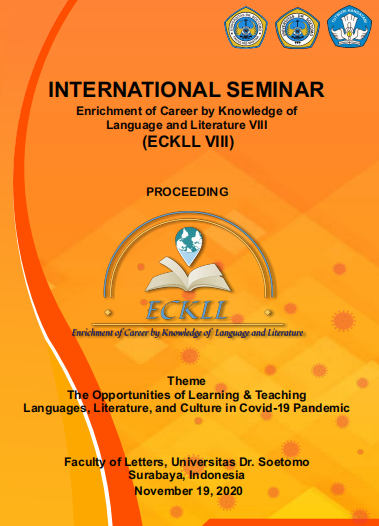Inventing a Tourist Village with Responsibility of Local Culture Potential
 Abstract views: 310
,
Abstract views: 310
,
 PDF downloads: 61
PDF downloads: 61
Abstract
Toyomarto Village is one of many villages located in Singosari, Malang regency, with an area of ±905 Ha. This village is geographically located on Arjuna slopes, which is 5 km from the nearest capital sub-district and 40 km from the capital district of Malang regency. Not only the place is strategic for a tourist destination, but it also has diverse and eminent potential in natural wealth and culture. However, this potential has not been optimally taken advantage of for the development of tourist villages. With a literary tourism approach, this study seeks to examine the potential of local narration to create a tourist spot. In this study, the story used for narrative reconstruction and visualization is Pantes block. Despite the literary tourism approach, this research utilizes the study of oral tradition and applied arts. The integration of oral tradition, literature, tourism, and applied arts approaches become a supporting instrument in developing a visual design
of a tourist spot rich in local culture and identity. For data collection, the researcher used two techniques including interview and observation. The data was taken from informants chosen based on several criteria. The data of this study were in the form of oral speech, gestures, expression, and cultural behavior which contain narrative stories and local histories. Besides creating the icon of folklore, the research also creates a planning design of a tourist spot named 'Pantes Block Spot' which is expected to provide an alternative choice for visitors.







